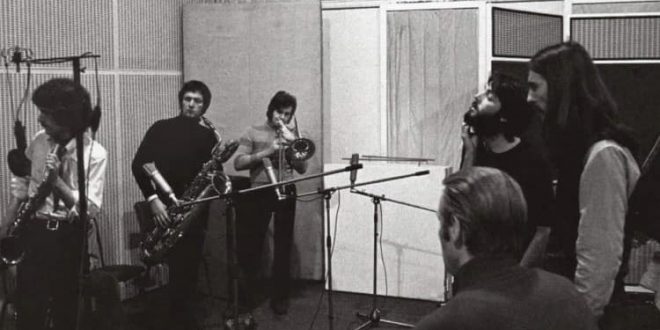The lyrics to “I Want You ( She’s So Heavy)” which consist only of the repetition of the title and the information that desire is driving the singer crazy, was even cited on BBCTV’s current program 24 Hours as an example of the greatest banalities in pop music. John Lennon was furious!He was convinced that the simplicity of the lines made it superior to “Eleanor Rigby” and “I Am The Walrus”. For him, it wasn’t an involution to monosyllabic and careless pop, it was just an economy of language.
“I Want You” was written as a love song for Yoko Ono. Lennon admitted the influence she had on his new style of songwriting and said that he intended to one day write the perfect song: with just one word! A poem by Yoko from 1964 consisted only of the word “water”.”I Want You (She’s So Heavy)” is one of the most complex studio recordings the Beatles made. Recording began in February 1969 at Trident Studios, but was not completed until August at Abbey Road, after countless edits and overdubs.
This song is a prime example of the group’s insatiable appetite for using the latest recording techniques in a constant search for new sounds in the world of recording and technology.John seemed intent on combining some of the heaviest sounds of the era, such as Jimi Hendrix and Cream, using a blues-soaked riff with thick layers of guitar, Moog synthesizer effects, and a minimalist vocal melody. After 35 takes of the base track, an edit was made of the best three parts, which feature a series of tempo changes, swinging alternately from a slower dense riff to an almost jazzy lounge. Lennon imitates his own vocal melody, doubling the notes of his guitar. The changes in the intensity of Lennon’s voice range from a pained whisper to harsh screams of the soul, repeating over and over the simple lines “I want you / I want you so / I want you / I want you so / it drives me crazy / it drives me crazy…” until he gets to “She’s So Heavy…” which he also repeats until he gets to the drastic ending”.Keyboardist Billy Preston added the appropriate textures through the various changes, from a relaxed tone of organ notes in the lighter jazzy sections, to a musical swagger during the song’s heaviest moments.
The Beatles exhibit impressive fluidity, especially Paul McCartney, showing considerable evolutions in their bass line, pulsing in a steady stream of notes through these various changes.The last three minutes are consumed by a whirlwind of guitars and overdubs in many layers using newly expanded studio tracking capabilities. Lennon also built a monstrous whirlpool of dense sound using an early Moog synthesizer combined with a white noise generator. With the churning guitars hammering away, the wall of white noise eventually starts to engulf the rest of the song before the track ends dramatically, leaving a deafening silence.



